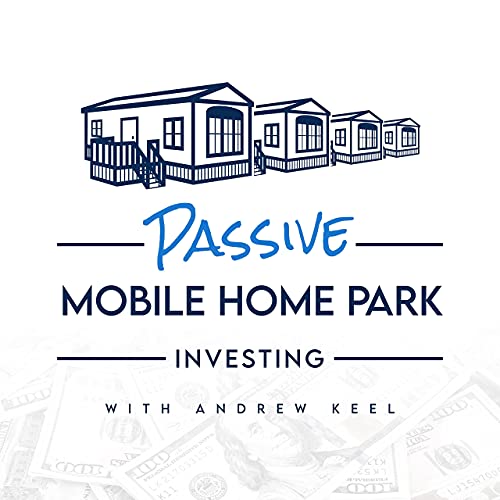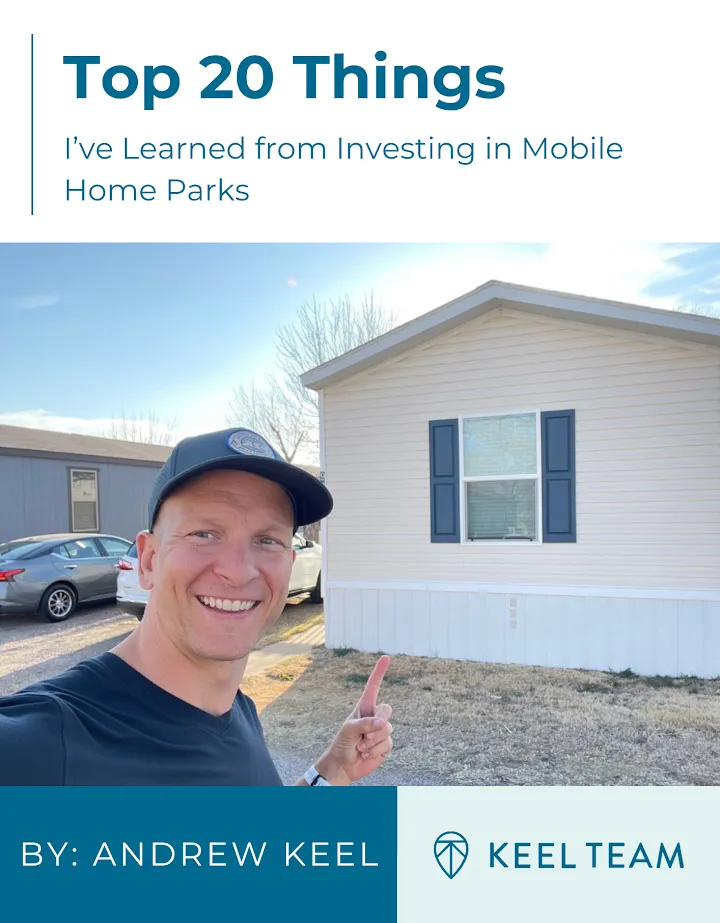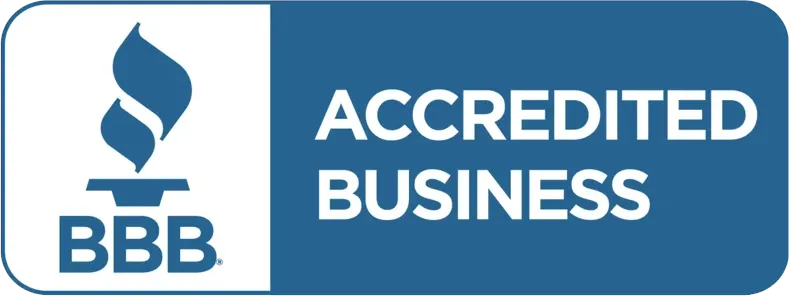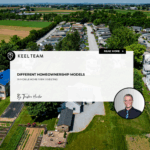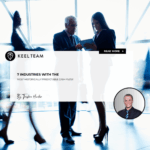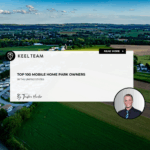Mobile Home Park Valuations in High vs Low Interest Rate Environments
-
 Tristan Hunter - Investor Relations
Tristan Hunter - Investor Relations
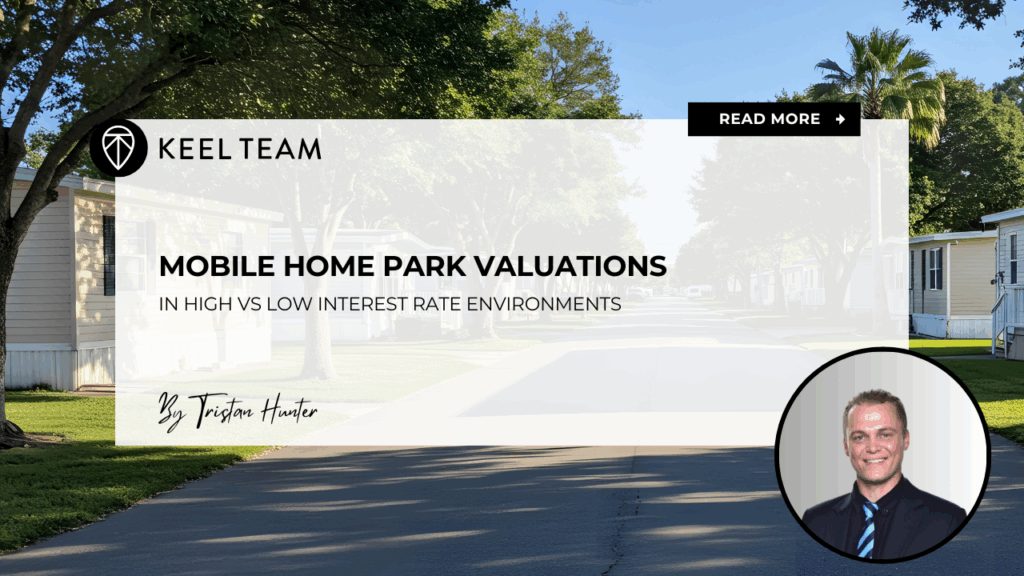
Mobile home park valuations often shift alongside interest rate swings. Understanding how these dynamics may play out can help investors adjust strategy, analyze deals wisely, and remain adaptable. This article explores the effects of both high and low interest rate environments—drawing on market data, financing trends, and valuation theory.
How Interest Rates Shape Mobile Home Park Demand
When interest rates are low, borrowing becomes more affordable. That may increase investor demand and, in turn, push up mobile home park valuations. Lower monthly debt service allows buyers to stretch their budgets and bid higher. This pattern echoes across commercial real estate, where lower interest rates tend to drive up prices—even if we can’t guarantee the trend holds in every market. For example, lower rates generally bring in more real estate investors, which may lead to rising valuations in mobile home parks.
When interest rates are high, financing costs increase. That may cool demand, putting pressure on valuations as buyers tighten their offer prices. In addition, refinancing or maturing commercial loans during periods of high rates may be tougher—and valuations may dip as a result.
Download our FREE eBook on the Top 20 things to know BEFORE investing in mobile home parks!
The Mechanics Behind Valuation: Cap Rates and Borrowing Costs
What Are Cap Rates—and Why They Matter
Cap rates remain central to income-property valuation. At a basic level:
Cap Rate = Net Operating Income (NOI) ÷ Property Value
Thus, if cap rates increase, the implied value may fall, assuming NOI stays the same—and vice versa Wikipedia.
Real-world data shows mobile home park cap rates typically range from about 7 % to 10 %, with some varying between 3 % and 11 % depending on deal-specific factors.
Example Scenarios
- High Interest Rates (e.g. 10 %)
If you’re financing 80 % of the deal with a 10 % interest rate loan while targeting a 7 % cap rate, cash flow may turn negative. That often forces investors to bid conservatively or require seller concessions. - Low Interest Rates (e.g. 4 %)
At the same 7 % cap rate but with 4 % financing, investors could enjoy positive cash flow, which may justify a higher valuation. Still, returns depend on other variables and can’t be guaranteed.
High vs. Low Interest Rate Environments: How Valuations Shift
In High Interest Rate Markets
- Reduced Borrowing Power
Higher interest costs may lower buyers’ maximum purchase price. Analysts estimate that commercial mortgage rates could range between 5.8 % and 6.5 % in 2025, significantly higher than the 3.5 % average in 2021. - Stronger Focus on Cash Flow and Stability
Investors may shift toward mobile home parks with high occupancy (over 85 %) and consistent NOI to offset rate pressure. - Smaller Deals Gain Preference
Smaller mobile home parks (20–50 lots) may be more appealing because they require less financing and carry less interest-rate risk. Some reports show a 12 % uptick in transactions for smaller commercial properties under such conditions. - Seller Financing Becomes Attractive
Limited access to traditional bank loans at high rates may boost the use of seller financing. Up to 15 % of deals may involve some form of this structure in tight credit markets. - Valuation Pressure and Transaction Slowdown
Across commercial real estate, rising rates are compressing valuations and reducing deal volume. With trillions in maturing CRE loans nearing refinancing, many owners face tougher choices—and possible capital injections—to make deals work.
In Low Interest Rate Markets
- Increased Buyer Demand
Low interest rates may spur greater investor activity. Buyers may bid more competitively, pushing mobile home park valuations higher. - Better Financing Terms
Lower borrowing costs can improve cash flow and returns. That may justify paying a premium for deals with strong fundamentals. - Refinancing Opportunities
Owners may refinance existing loans to reduce debt service, freeing up capital for improvements and potentially enhancing value. - Elevated Competition
With the sector’s stable demand and affordable housing narrative, mobile home parks may attract more institutional and private equity capital during low-rate cycles.
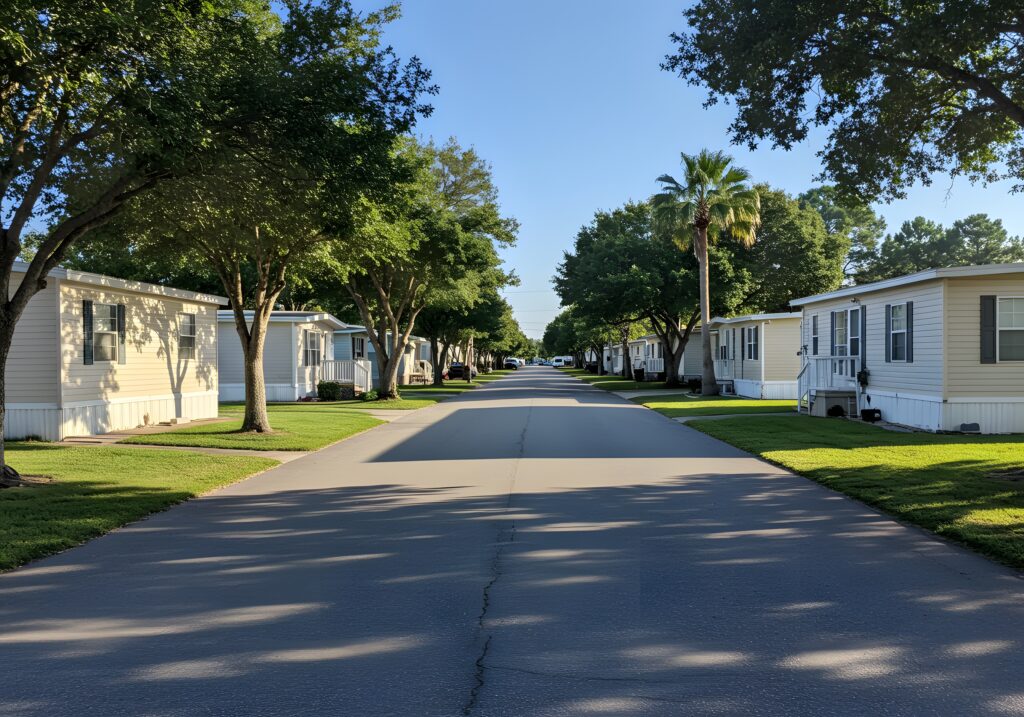
Adapting Investment Strategies by Interest Rate Environment
High Rate Strategies
- Lock in fixed-rate financing if possible to stabilize long-term debt service.
- Tap into seller financing or government-backed loans (USDA, SBA) to access more favorable debt terms—with caveats around eligibility.
- Target value-add opportunities: parks with below-market rents or operational inefficiencies may be acquired at lower prices with upside potential.
- Reduce reliance on leverage: use more equity to lessen exposure to high rates.
Low Rate Strategies
- Expand via low-cost debt: use favorable financing to acquire more or higher-quality mobile home parks.
- Refinance existing debt: lock in lower rates to boost free cash flow.
- Pursue premium assets: low rates may make larger or better-performing mobile home parks affordable.
- Invest in improvements: use savings from debt reduction to enhance infrastructure and raise valuation.
Looking Ahead: Market Trends and Valuation Tools
Resilient Demand for Affordable Housing
Mobile home parks often offer more stable demand compared to other property types. Challenges like rising homeownership costs may strengthen the long-term value proposition—even though future trends can’t be assured.
Limited Supply and Institutional Interest
Development constraints—like zoning restrictions—limit supply. That supply-demand imbalance may support valuations over time. Moreover, institutional capital is increasingly entering the space, which may influence pricing dynamics.
The Rise of Predictive AI in Valuations
In 2025, predictive AI models are emerging as a new tool. They allow investors to simulate how mobile home park valuations respond to interest rates, tenant turnover, submarket trends, and operational improvements. While promising, these tools remain nascent and aren’t foolproof.
Conclusion
Interest rates may significantly influence mobile home park valuations—though outcomes often depend on deal specifics, financing structures, and broader market trends. In high-rate environments, rising borrowing costs may temper valuations and slow transactions. In contrast, low-rate settings may fuel competition and drive prices upward. Nevertheless, mobile home parks may retain resilience through stable demand, limited supply, and flexible financing options. Investors who remain adaptable and data-informed may navigate these shifts more effectively—though outcomes can never be guaranteed.
Are you looking for MORE information? Book a 1-on-1 consultation with Andrew Keel to discuss:
- A mobile home park deal review
- Due diligence questions
- How to raise capital from investors
- Mistakes to avoid, and more!
Disclaimer:
The information provided is for informational purposes only and is not investment advice or a guarantee of any kind. We do not guarantee profitability. Make investment decisions based on your research and consult registered financial and legal professionals. We are not registered financial or legal professionals and do not provide personalized investment recommendations.

Tristan Hunter - Investor Relations
View The Previous or Next Post
Subscribe Below 👇
